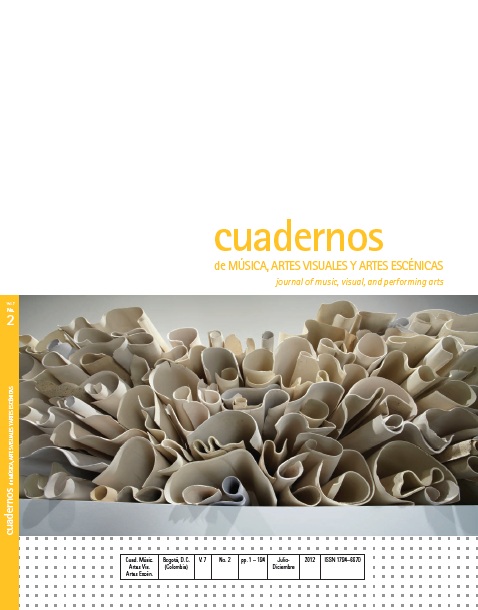Abstract
La relación entre la música y el movimiento interesa a las artes temporales y del movimiento. En este trabajo, formulamos una hipótesis de coexpresión entre ambos y realizamos tres estudios: i) comparación de frases de música y movimiento en coreografías de danza, ii) análisis de la coocurrencia sonoro-kinética en el climax de una obra y iii) testeo de la sensibilidad del receptor a la información sonoro-kinética. Encontramos que i) el movimiento se organiza en forma coherente con la estructura musical en una correspondencia no estricta; ii) el inicio del movimiento anticipa siempre al ataque sonoro y culmina siempre después, aunque sonido y movimiento llegan juntos en el ataque, y iii) el receptor es sensible a la tensión kinético-tonal y a los aspectos individuales de la performance. Corroboramos la coexpresión, siendo que ambos modos expresivos pertenecen a universos separados.This journal is registered under a Creative Commons Attribution 4.0 International Public License. Thus, this work may be reproduced, distributed, and publicly shared in digital format, as long as the names of the authors and Pontificia Universidad Javeriana are acknowledged. Others are allowed to quote, adapt, transform, auto-archive, republish, and create based on this material, for any purpose, provided the authorship is duly acknowledged, a link to the original work is provided, and it is specified if changes have been made. Pontificia Universidad Javeriana does not hold the rights of published works and the authors are solely responsible for the contents of their works; they keep the moral, intellectual, privacy, and publicity rights.
Approving the intervention of the work (review, copy-editing, translation, layout) and the following outreach, are granted through an use license and not through an assignment of rights. This means the journal and Pontificia Universidad Javeriana cannot be held responsible for any ethical malpractice by the authors. As a consequence of the protection granted by the use license, the journal is able to publish retractions or to correct information already published. Publishing contents in this journal does not generate royalties for contributors.


